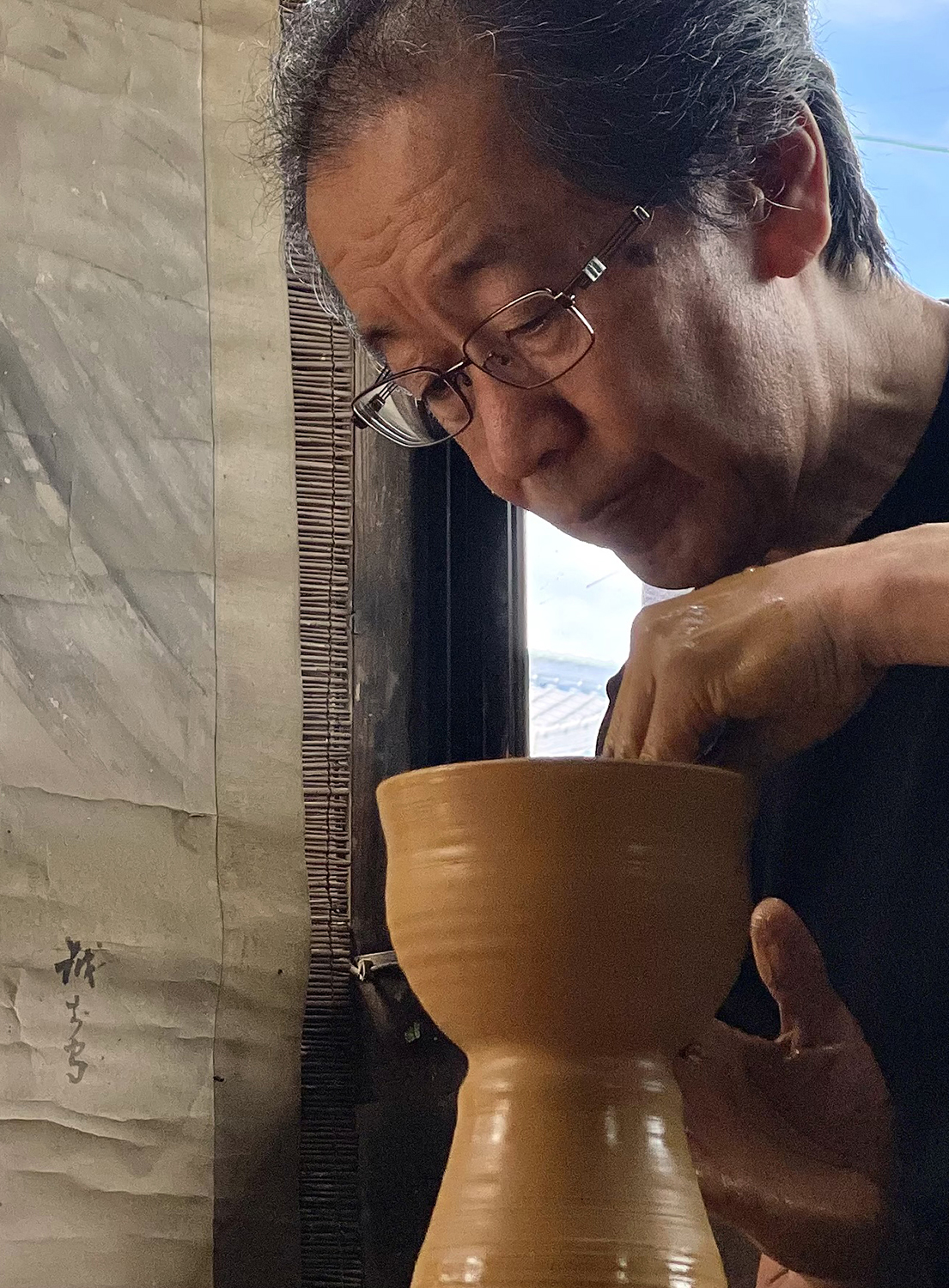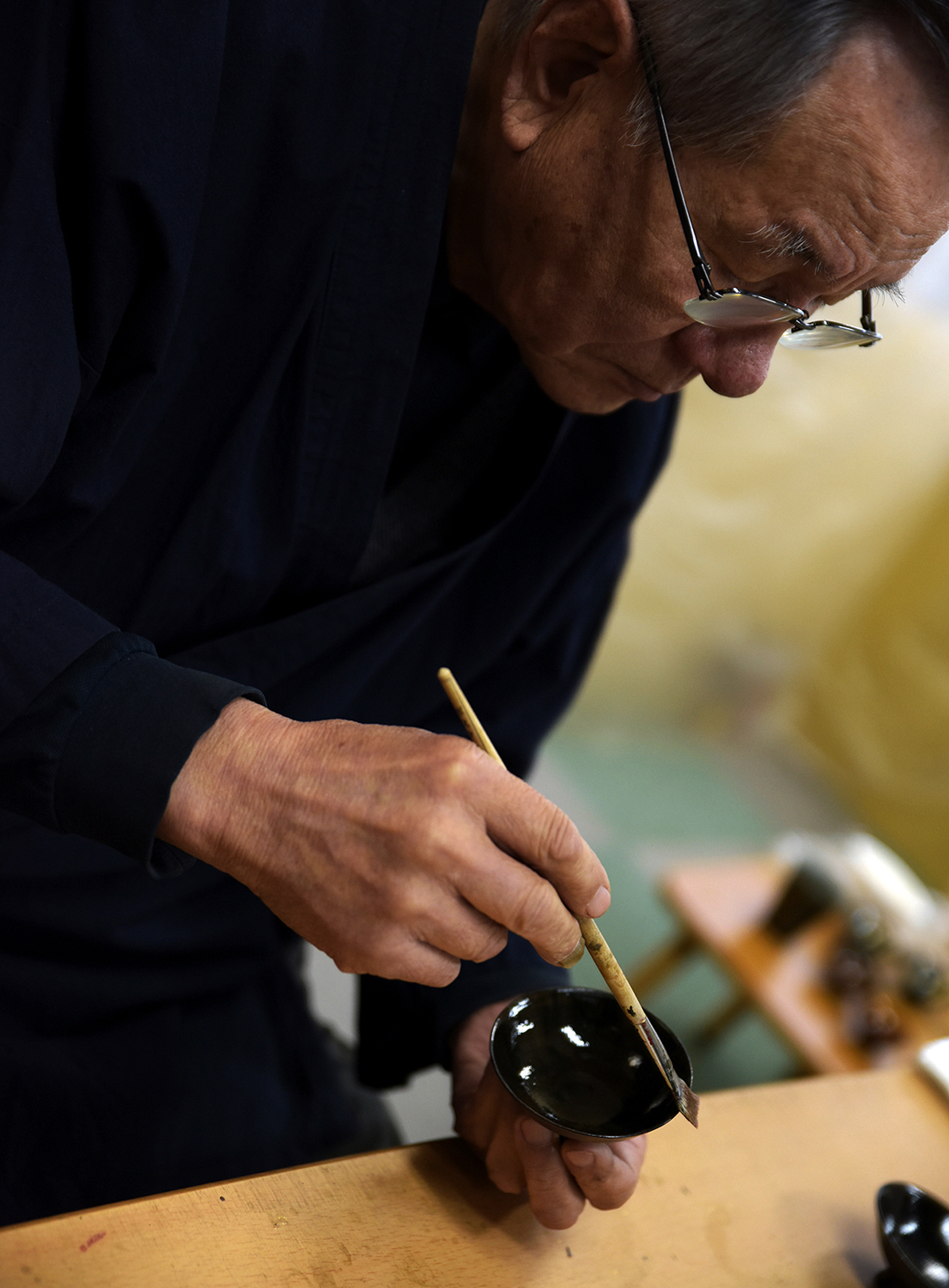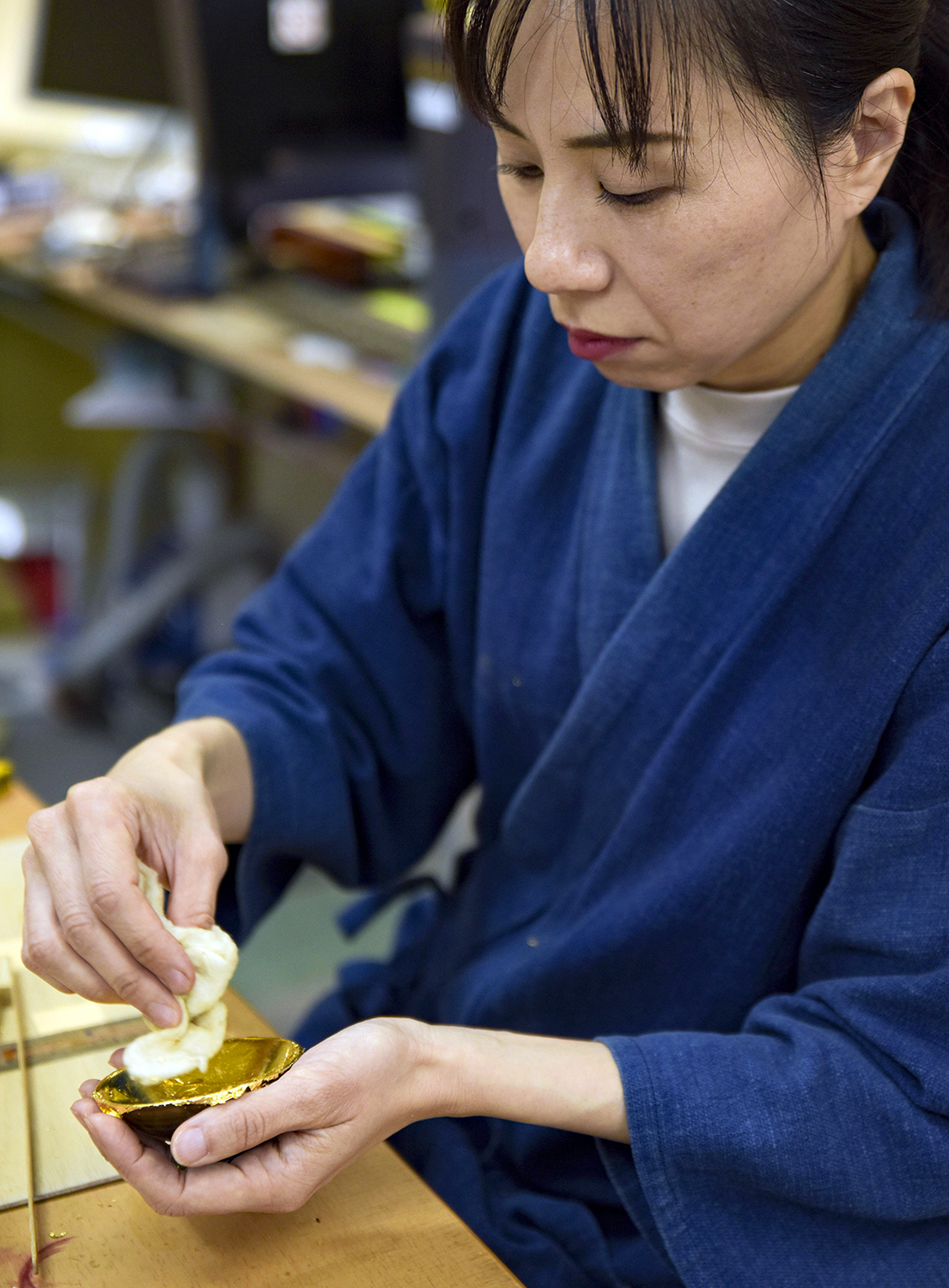
The "sakazuki" is a traditional Japanese vessel for drinking sake.
Our "Golden Sakazuki" is handmade of all natural materials by master craftsmen-every cup is an original. It makes an exquisite keepsake as well as fine gift for a very special someone.











Fine-grained clay is produced through the crushing and elutriation of base clay and soils. 14th generation Takatori Hachinojo Shinobazu personally makes the clay from raw soils he collects in the vicinity of his studio, aging it after elutriation until it reaches the perfect density and water content.

The sakazuki vessel is molded by the 14th generation Takatori Hachinojo Shinobazu.The extremely thin and light vessel is a renowned characteristic of the 400-year old Takatori Hassen kiln.
Raw materials in the glaze are a mixture of wood ash, straw ash, rust, and feldspar. In the high temperature of the firing (called hon-yaki), the glaze melts differently depending on where it is placed in the kiln. The application of glaze is thus finely tuned to compensate for the difference.

The vessel is fired in a wood-fired kiln at a peak temperature between 1230 and 1280 degrees Celsius. The melted glaze forms a deep and rich color.
Two or three coats of urushi lacquer is applied to create a smooth base, which is essential for ensuring that the gold leaf sticks to the surface of the ceramic vessel and keeps its shiny complexion.
The thickness of the gold leaf is approximately 0.1 micron. It must be stamped in a windless environment. We use only the finest gold leaf-pure gold and No.1 color rating.

The aroma of Japanese sake (such as Dassai) is affected greatly by its exposure to the air (its total surface area). The wide and shallow Golden Sakazuki is best for fine sake, allowing the full bouquet to be enjoyed while sipping it. Small sips allow the sake to be slowly swallowed while coating the tongue, highlighting the complex flavors made during fermentation of the rice in sake.

A masterpiece that converges the skills of leading craftsmen

The kiln was established more than 400 years ago and has continued unbroken for 14 generations. Takatori Hassen is renowned mostly for its ceremonial vessels for Japanese tea.
Our Golden Sakazuki is based on the "Kuroda Sakazuki," made originally for the head of the clan that ruled the Fukuoka Domain during the Edo Period. The cup is characterized by being extremely thin and light, with a deep and rich color, and having a smooth texture that brings out the best nature of fine sake.

Jobido has focused on maintaining and repairing Buddhist altars that are commonly maintained for multiple generations in head-of-household families. Home altars are commonly ornate and finely-detailed, incorporating skilled woodwork, urushi lacquer, and gold leaf.
Era has been dedicated to preserving family altars, so that they can be keepsakes for many generations.

Era is particularly skilled in painting urushi lacquer and gold leaf stamping, indispensable skills for repairing Buddhist altars. These skills are also central to making the Golden Sakazuki.
We are interested in partnering with qualified distributors/dealers throughout the world. Interested parties should have experience with fine arts and crafts and especially those pertaining to Japanese history and culture. Knowledge and experience with Japanese sake is also welcomed but not required.

